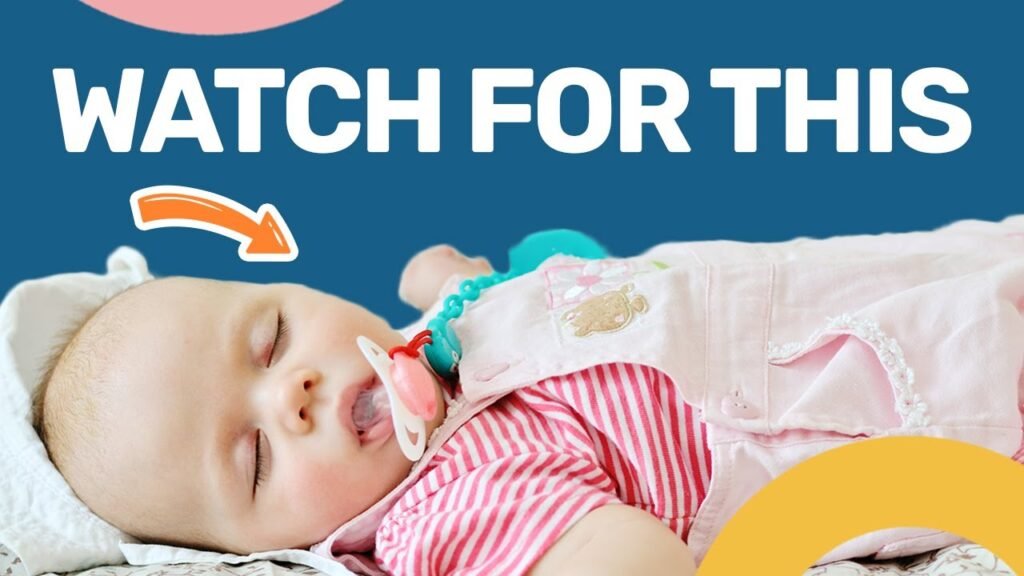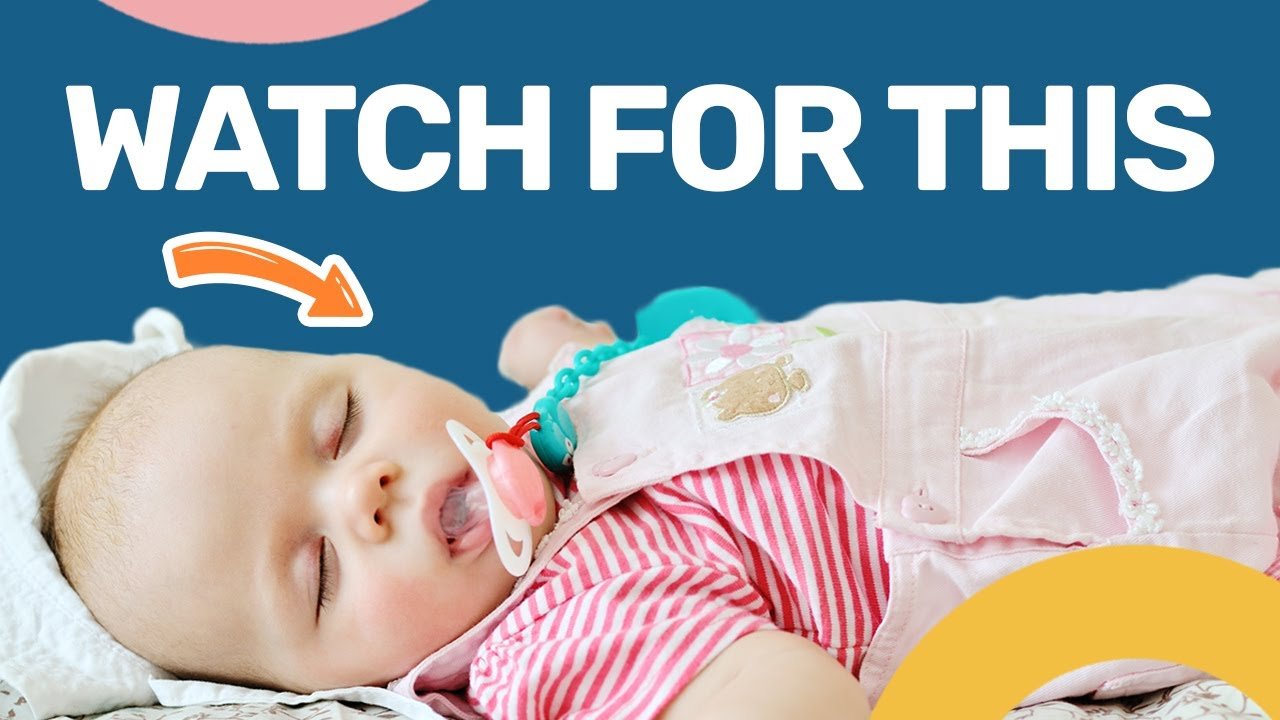Sometimes, the simplest things can have a big impact on your baby’s sleep. Take pacifiers, for example. While they can be a soothing tool for newborns and help them fall asleep, they can also cause frequent waking during the night. This is because babies often rely on the pacifier to fall back to sleep after each sleep cycle. However, babies under 8 months of age may not have the ability to put the pacifier back in themselves, leading them to wake and cry for your help. In this article, we will explore the impact of pacifiers on frequent waking in babies and discuss the recommended approach to weaning off the pacifier.
If your baby is waking up frequently throughout the night and experiencing short naps, the use of pacifiers could be the culprit. In this video by Emma Hubbard, you’ll learn more about this common mistake and how it can affect your baby’s sleep. Babies under 8 months of age may struggle to put the pacifier back in themselves, leading to frequent waking as they search for it. However, pacifiers can be beneficial for newborns as they help soothe and calm them. The American Academy of Pediatrics recommends introducing a pacifier at one month of age and weaning off it at six months to prevent dental problems and support fine motor and language development. This article will also discuss two approaches to weaning off the pacifier, the cold turkey approach, and the graded approach, and provide tips on creating a conducive sleeping environment for your baby during the weaning process.
The Impact of Pacifiers on Frequent Waking in Babies
Introduction
If your baby is waking up frequently throughout the night and taking short naps, the use of pacifiers may be the cause. Pacifiers can be a helpful tool to soothe and calm newborns, but they can also create a dependency that leads to frequent waking. In this article, we will explore the relationship between pacifiers and frequent waking in babies, the reasons why pacifiers can cause disruptions in sleep, and the importance of weaning off pacifiers at the appropriate age.
The relationship between pacifiers and frequent waking
When babies rely on pacifiers to fall asleep, they often wake up after each sleep cycle in search of their pacifier. Babies under 8 months of age may lack the fine motor skills to put the pacifier back in themselves, causing them to call out for assistance. This dependence on the pacifier can result in multiple wake-ups throughout the night, leading to disrupted sleep patterns and shorter naps.
Reasons why pacifiers can cause frequent waking
The use of pacifiers can contribute to frequent waking in babies due to the natural cycle of sleep and the inability of young infants to self-soothe. Sleep cycles, which typically last 60 to 90 minutes, involve transitioning from light sleep to deep sleep and REM sleep, followed by a partial awakening. When a baby wakes up during this cycle, they seek their pacifier as a means of falling back to sleep. However, if they are unable to find or replace the pacifier themselves, they may call out for assistance, causing disruptions in their sleep.
Pacifiers as a soothing tool for newborns
While pacifiers can contribute to frequent waking in older babies, they can be beneficial for newborns. Newborns do not yet have the ability to self-soothe, and using a pacifier can activate the parasympathetic nervous system, reducing stress and releasing endorphins to soothe a fussy baby. Pacifiers can also provide pain relief during minor medical procedures and reduce the risk of sudden infant death syndrome when used at naptime and bedtime.

Recommendations from the American Academy of Pediatrics
The American Academy of Pediatrics recommends introducing a pacifier at one month of age and continuing its use until six months of age. After six months, the organization recommends weaning off the pacifier to prevent middle ear infections and promote dental, fine motor, and language development. Removing the pacifier at six months can also prevent long-term dental problems associated with prolonged pacifier use.
Benefits of removing pacifiers at six months
Removing the pacifier at six months of age allows babies to develop the ability to fall asleep without dependency on the pacifier. This age milestone is an optimal time for weaning off the pacifier, as babies are more adaptable and can adjust to new sleep habits more easily. Additionally, removing the pacifier at this age ensures that it does not hinder fine motor and language development, as constantly sucking on a pacifier can prevent babies from mouthing toys and babbling.
Approaches to weaning off pacifiers
There are two main approaches to weaning off pacifiers: the cold turkey approach and the graded approach. The cold turkey approach involves removing the pacifier completely and teaching the baby to fall asleep without it. This approach can be effective because babies at six months of age have the ability to fall asleep independently; they just need to learn how. The graded approach, on the other hand, gradually limits the use of the pacifier, starting with only allowing it at naptime and bedtime, then removing it from nighttime sleep and eventually stopping its use for daytime naps.
The cold turkey approach
The cold turkey approach to pacifier weaning involves selecting a day to completely remove the pacifier from the baby’s sleeping routine. All pacifiers should be thrown away or donated, and instead of offering the pacifier to help the baby sleep, parents can use various sleep training methods to assist their little one in falling asleep without the pacifier. It is important to note that this approach does not mean letting the baby cry themselves to sleep. There are many gentle methods, such as staying by their side and patting them, that can be used to help them learn to fall asleep independently.
The graded approach
The graded approach to pacifier weaning involves gradually reducing the use of the pacifier over time. Initially, the pacifier is limited to naptime and bedtime, only used to soothe the baby to sleep. Once the baby has adapted to this change, the pacifier is removed from nighttime sleep and only used during daytime naptime. Eventually, the pacifier is discontinued for daytime naps as well, with the baby relying on self-soothing strategies that they have developed through previous use.
Creating a conducive sleeping environment during pacifier weaning
To facilitate the pacifier weaning process, it is important to create a sleeping environment that is conducive to sleep. This includes ensuring that the baby’s room is dark, quiet, and at a comfortable temperature. Implementing a consistent bedtime routine can also help signal to the baby that it is time to sleep, making the transition away from the pacifier smoother.
Conclusion
While pacifiers can provide comfort and soothing effects for newborns, they can also lead to frequent waking in older babies. Understanding the relationship between pacifiers and sleep disruptions is important for parents who wish to wean their babies off pacifiers at the appropriate age. Whether using the cold turkey or graded approach, it is essential to create a conducive sleeping environment and remain patient throughout the process. By following recommended guidelines and promoting independent sleep habits, babies can gradually adapt to falling asleep without pacifiers, resulting in better sleep patterns and overall well-being.

